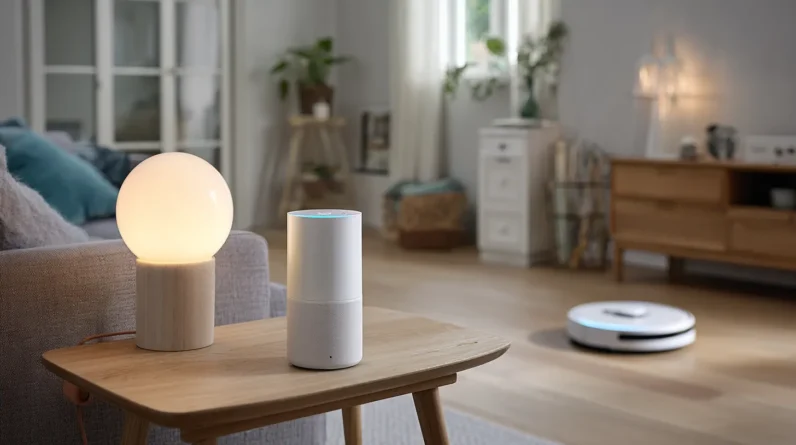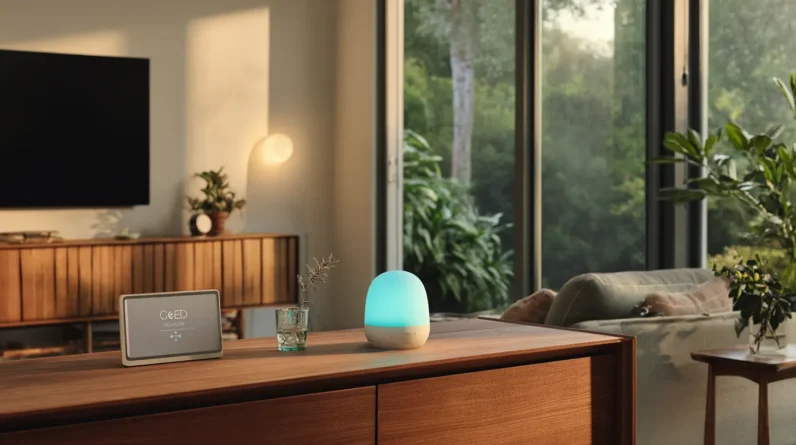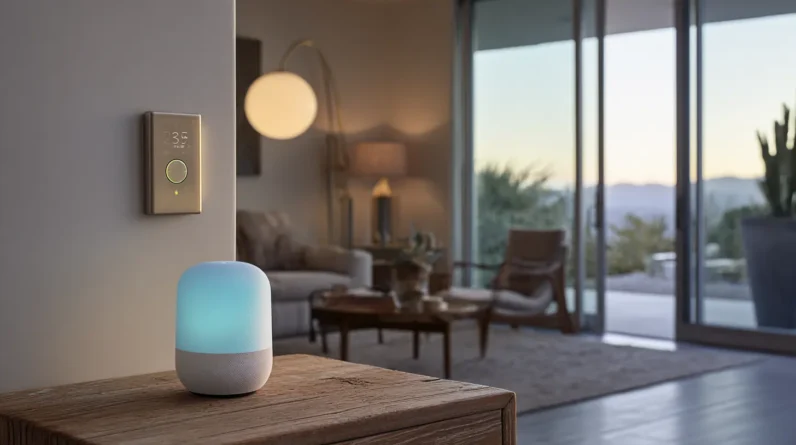
When we’re building a smart home, we want devices that integrate seamlessly with popular platforms like Amazon Alexa or Google Home for easy voice control. They should support common standards like Zigbee or Wi-Fi, ensuring a harmonious ecosystem. Setup should be a breeze, taking under 15 minutes, with intuitive user interfaces for daily use. Robust security features like data encryption and two-factor authentication are must-haves. Plus, we expect energy efficiency and durability for long-term value. Let’s explore what makes these devices tick.
Compatibility and Integration
When we’re setting up a smart home, the first thing we want to guarantee is that all our devices can talk to each other seamlessly. This is where compatibility and integration come into play. We need devices that support multi-platform interaction, ensuring that our smart speaker can control our smart lights, and our smart thermostat can adjust based on input from our motion sensors. To achieve this, we look for devices that adhere to common device standards, such as Zigbee, Z-Wave, or Wi-Fi for local connectivity, and support platforms like Amazon Alexa, Google Home, or Apple HomeKit for voice control. By prioritizing these features, we create a harmonious smart home ecosystem that works efficiently and intuitively.
Ease of Use and Setup
Setting up a smart home shouldn’t require a degree in engineering. We expect a great smart home device to offer hassle-free setup and a intuitive user interface. Let’s break down what that looks like:
| Setup Time | Steps Required |
|---|---|
| Under 15 min | Plug in, download app, follow app instructions |
| 15-30 min | Plug in, download app, create account, follow app instructions |
| 30-60 min | Plug in, download app, create account, connect to other devices, follow app instructions |
| Over 60 min | Plug in, download app, create account, connect to other devices, troubleshoot, follow app instructions |
Ideally, we want to see a device that’s unpacked, plugged in, and connected in mere minutes. Device customization should be straightforward, allowing us to adjust settings to our preferences without digging through endless menus. A truly user-friendly device understands that not everyone is a tech whiz, making the process from setup to everyday use a breeze.
Voice Control and Automation
After effortlessly setting up our smart home device, we expect an equally seamless experience when it comes to voice control and automation. Integrating advanced speech recognition technology, our device should accurately interpret and respond to commands. It should support popular voice assistants like Amazon Alexa, Google Assistant, or Apple’s Siri, allowing us to control lights, adjust thermostats, or manage entertainment systems with simple voice commands. Automation takes this a step further, enabling us to set routines that execute multiple actions with a single trigger. For instance, saying “goodnight” could turn off lights, lock doors, and set the alarm. By combining voice control and automation, we create a harmonious smart home ecosystem that responds intuitively to our needs.
Security and Privacy Features
While we revel in the convenience of voice control and automation, it’s crucial that we don’t overlook the importance of security and privacy features. A great smart home device should employ robust data encryption to protect our personal information. This guarantees that even if data is intercepted, it remains unreadable without the decryption key. Additionally, strong user authentication methods must be in place. This isn’t just about setting a password; it’s about implementing two-factor authentication, biometric scans, or other secure login methods. We should also look for devices that offer frequent software updates, which help patch vulnerabilities and keep our systems secure. By prioritizing these features, we can enjoy our smart home devices with peace of mind, knowing our data is safe.
Energy Efficiency and Sustainability
Beyond the security features that safeguard our smart home devices, we should also consider their impact on our energy consumption and the environment. Smart home devices should ideally integrate with eco-friendly systems and promote energy efficiency. Look for devices that offer power-saving modes or can be programmed to turn off when not in use. Some advanced devices even monitor energy usage, helping us identify areas where we can cut back. Additionally, consider devices that can be powered by renewable sources, such as solar or wind energy. By focusing on energy efficiency and sustainability, we not only reduce our carbon footprint but also save on utility bills in the long run.
Reliability and Durability
When we invest in smart home devices, we expect them to perform consistently and last for a significant period. Reliability and durability are paramount; we need devices that won’t falter after a few months of use. To guarantee this, rigorous device testing is essential. We should scrutinize reports and reviews that assess a device’s performance under various conditions. Additionally, material quality plays a vital role. Devices made from robust, high-quality materials are more likely to withstand daily wear and tear. Check for certifications and standards that vouch for the device’s build quality. By prioritizing these factors, we can select smart home devices that offer long-term value and minimal maintenance.
Cost and Value for Money
After ensuring our smart home devices are reliable and durable, we naturally turn our attention to cost and value for money. The initial investment for smart home devices can vary widely, but it’s vital to take into account not just the upfront cost, but also the long term savings they can provide. Devices like smart thermostats or energy-efficient smart lighting can substantially reduce utility bills over time, offsetting their initial cost. Additionally, consider the value added by features such as enhanced security, convenience, and peace of mind. To master the balance between cost and value, we should evaluate each device based on our specific needs and the benefits it offers. Don’t be swayed by low prices alone; instead, focus on the overall value for money.
Conclusion
When we’re choosing smart home devices, we need to take into account more than just cool features. We’re looking for seamless integration, intuitive use, and robust security. Don’t forget, the smart home market is expected to grow by 31% annually until 2026, so our choices will shape a rapidly evolving industry. Let’s opt for sustainable, durable devices that offer real value—for us and the environment.







